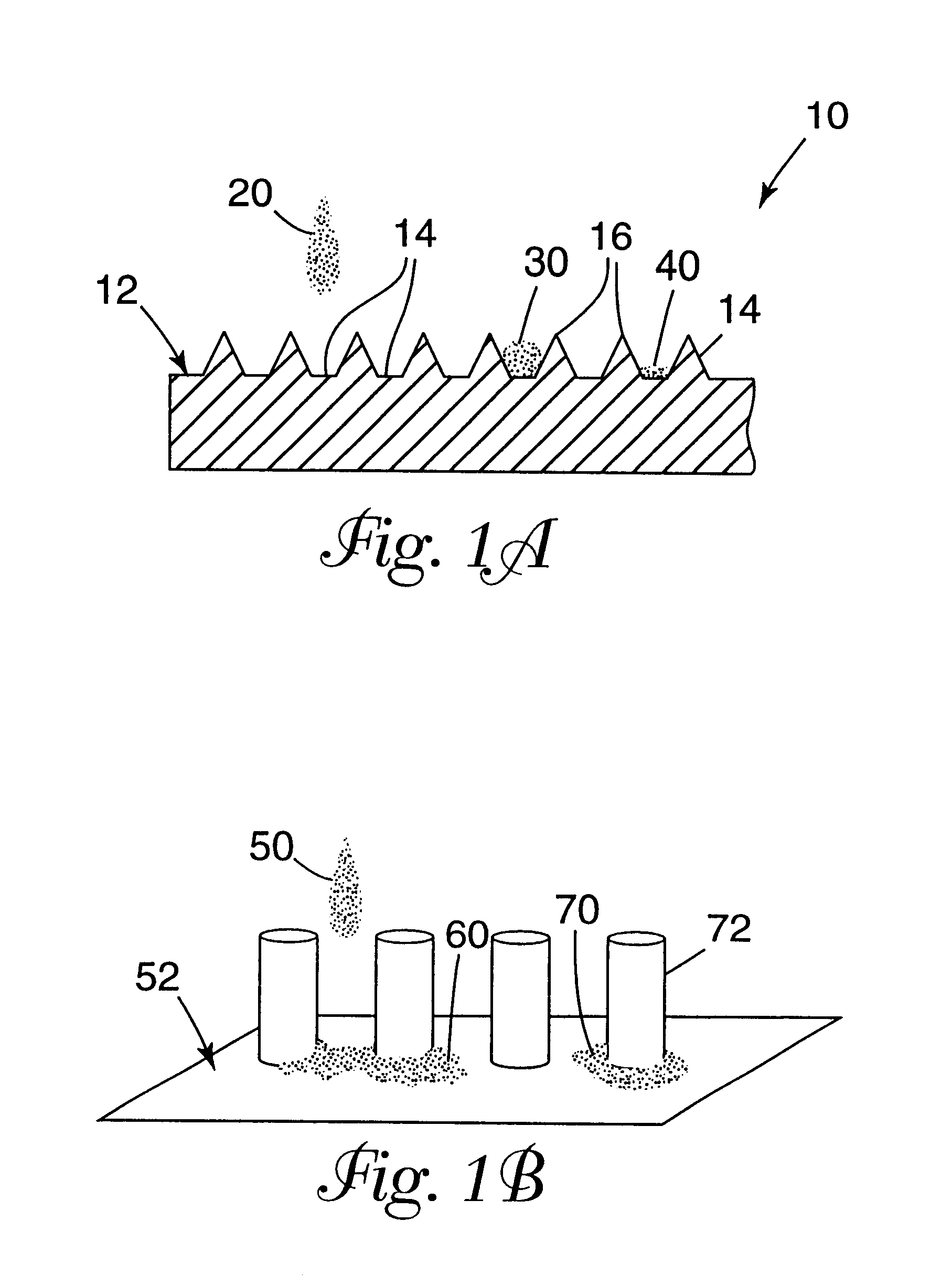Random microembossed receptor media
- Summary
- Abstract
- Description
- Claims
- Application Information
AI Technical Summary
Benefits of technology
Problems solved by technology
Method used
Image
Examples
example 1
Generation of Microembossed Films
A polyethylene (PE) layer on paper, "MQ-1" obtained from Felix Schoeller Technical Papers of Germany, was prepared with a random pattern according to the methods outlined in U.S. Pat. No. 4,025,159, incorporated herein by reference. The surface of the PE was thus covered with roughly hemispherical voids 50-85 micrometers in diameter, most lying in the 70-80 micrometer range. The SEM as FIG. 2 illustrates the appearance of the PE film after bead removal. This substrate will be referred to as SUBSTRATE 1 and is seen in FIG. 2.
Some of this material was subsequently flattened by compression molding against a smooth RTV silicone surface. This material will be referred to as CONTROL 1. Samples of SUBSTRATE 1 and CONTROL 1 were printed upon with several printers. SUBSTRATE 1 was also used further to make the same random hemispherical void pattern in other thermoplastics. A piece of SUBSTRATE 1 was used as a template to cast a curable silicone ("SLASTIC J" t...
example 2
Print Tests of SUBSTRATE 1 and CONTROL 1
Printer: HP855Cse. Excellent image quality and resolution was observed when TEST PATTERN 1 was printed in plain paper mode at normal speed on SUBSTRATE 1. Qualitative comparison of CONTROL 1 to SUBSTRATE 1, showing the strong effect of print resolution using only the surface pattern (without further coatings, etc.) is exemplified in FIGS. 3 and 4, respectively.
Printer: HP2500CP. This printer, used to print the TEST PATTERN 3 test pattern, caused some ink bleed on SUBSTRATE 1 in areas of high color fill. Also, the dry time in the areas showing ink bleed was poor. Other than this, the quality of the print was very good, with good color density. SOLUTION 1 and SOLUTION 2 were coated onto two samples of SUBSTRATE 1 using a #3 Mayer rod; after drying, the coated substrates were subjected to the same print tests. No ink bleed was observed, and dry times were less than 5 minutes even in the high color fill areas. Also, image density was improved in b...
example 3
Print Tests on SUBSTRATE 2 and CONTROL 2
HP2000. SUBSTRATE 2 and CONTROL 2 were used to print TEST PATTERN 1 in plain paper mode / normal quality. FIGS. 13 and 14, respectively, show the difference in the prints obtained. In general, the observations for SUBSTRATE 2 vs. CONTROL 2 were the same as those made for SUBSTRATE 1 vs. CONTROL 1.
PUM
| Property | Measurement | Unit |
|---|---|---|
| Thickness | aaaaa | aaaaa |
| Volume | aaaaa | aaaaa |
| Volume | aaaaa | aaaaa |
Abstract
Description
Claims
Application Information
 Login to View More
Login to View More - R&D
- Intellectual Property
- Life Sciences
- Materials
- Tech Scout
- Unparalleled Data Quality
- Higher Quality Content
- 60% Fewer Hallucinations
Browse by: Latest US Patents, China's latest patents, Technical Efficacy Thesaurus, Application Domain, Technology Topic, Popular Technical Reports.
© 2025 PatSnap. All rights reserved.Legal|Privacy policy|Modern Slavery Act Transparency Statement|Sitemap|About US| Contact US: help@patsnap.com

